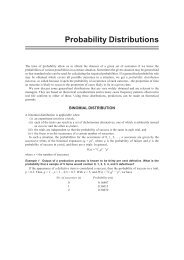International-Business-Dr-R-Chandran-E-book
International-Business-Dr-R-Chandran-E-book
International-Business-Dr-R-Chandran-E-book
Create successful ePaper yourself
Turn your PDF publications into a flip-book with our unique Google optimized e-Paper software.
145<br />
<strong>International</strong> <strong>Business</strong>- <strong>Dr</strong>. R. <strong>Chandran</strong><br />
Is the mindset of your company’s top management sufficiently global? As<br />
the world around you changes and new opportunities open up in various<br />
parts of the world, is your company generally a leader or a laggard in<br />
identifying and exploiting these opportunities? How should you create the<br />
needed global mindset?<br />
5. Vision and long term objective:<br />
Does your company have vision? Is it there with everyone? Whether proper<br />
road-map is in place. Is it only for generation of money or for leadership?<br />
6. Right human resource to handle:<br />
Do you have sufficient HR, especially technical? Or yet to be appointed in<br />
the location of operation?<br />
Once a company has selected the country or countries that will serve as a<br />
launch vehicle for its products, it must determine the appropriate mode of<br />
entry. This issue rests on two fundamental questions:<br />
• To what extent will the company rely on exports versus local production<br />
in the target market? Here the firm has a range of choices as follows. (i)<br />
100 percent export of finished goods, (ii) export of components but<br />
localized assembly, (iii)100 percent local production.<br />
• To what extent will the company exercise ownership and control over the<br />
activities carried out locally in the target market? Again, it faces a range<br />
of choices as follows: (i) 0 percent ownership by licensing or franchising,<br />
(ii0 partial ownership such as joint ventures or collaboration, (iii) 100<br />
percent ownership as a wholly owned subsidiary.<br />
Local production would be appropriate under the following conditions:<br />
1. Longer local production: The local market is larger than the minimum<br />
efficient scale of production. The larger the local market, the more local<br />
production will translate into scale economies while holding down tariff<br />
and transportation costs. An example is the entry of the Japanese tyre<br />
group Bridgestone into the US market by acquiring the local production<br />
base of Firestone instead of exporting tyres from Japan.<br />
2. Cost of logistics and tariffs: Shipping and tariff costs of exporting to the<br />
target market are so high that they neutralize any cost advantages of<br />
manufacturing the product at any place other than the target market. This<br />
Only for Private Circulation





